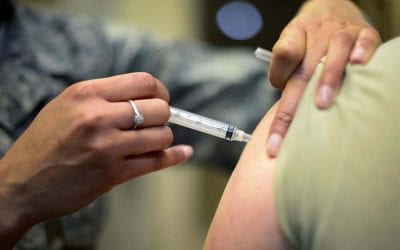By now, you’ve likely read about US Airways flight 1702, Philadelphia (PHL) to Ft. Lauderdale (FLL), scheduled for late afternoon on March 13th. Initial news reports indicated the Airbus A320 with 149 passengers and five crew on board, blew a tire during the takeoff. With the nose gear already off the ground, the pilot aborted the flight. Other reports indicate a fire in one of the engines during takeoff. When the nose gear hit the ground hard, it collapsed, causing the plane’s nose to hit the tarmac and the plane to skid off the runway.
Eventually, the National Transportation Safety Board (NTSB) will learn what happened on flight 1702, which is important. But, I’m more concerned about what airplane passengers can learn from the incident.
Larry Grant, a passenger on the ill fated flight, told reporters,
“It happened very quickly, so we didn’t know exactly what was going on. Almost instantaneously people from the back were screaming ‘fire, fire,’ …”
Passengers began to evacuate moments after hearing about the fire, as can be seen on this video. As someone who has spoken to countless airline personnel over the years, several things struck me about the passengers in the video and in other images of the evacuation.
• The window emergency exit over the wing above the smoking engine was opened despite passengers observing the engine was on fire, and was used for the evacuation despite the engine still spewing smoke.
• Many passengers stayed near the aircraft in spite of seeing one of the plane’s engines smoking.
• Passengers took time to take selfies in front of the crashed plane, and a few were taking cell phone videos, rather than get away from the aircraft quickly.
• Many passengers held their carry-on luggage as they slid down the evacuation chutes, which slowed the evacuation and endangered fellow passengers.
• Quite a few passengers were dressed for the weather in Ft. Lauderdale, not Philadelphia, and some women were wearing high heels as they slid down the evacuation chutes.
• Many passengers jumped on the chutes and collided with others in the back and head at the chute’s bottom, mainly because other passengers were carrying lots of belongings and having a hard time getting up from the chute.
I’ve written about plane crash survival before, such as in my column, “Maximize your survival odds with this air passenger preflight checklist.” Preparation is important, but so is each air passenger’s conduct during and immediately following a crash.
Here are the eight lessons I have learned to keep myself as safe as possible in the event of an airplane mishap or crash. They were validated by the evacuation of US1702.
• Count the number of rows from my seat to the nearest emergency exit, both in front and behind me, in case there’s smoke obscuring vision during an evacuation.
• Dress appropriately. Did you see the man in shorts and the women in very short dresses and no coats coming off the plane in the video, as it was cold and windy that day? They undoubtedly got very cold waiting to be picked up by the buses. I would have put a warm jacket under the seat in front of me, for a quick grab, just in case. I’m cognizant that about 80 percent of airplane accidents occur during the first 3 to 5 minutes of flight, and the last 10 minutes.
• Review the airplane safety card after boarding, even if I’ve flown in the same or similar plane.
From personal experience, I know airplane cabins can be chaotic during emergency evacuations. You’ve got to remain calm, make good decisions, and follow procedure.
• If it’s cold, grab your coat, but leave your carry-ons, as they will slow your evacuation, and endanger you and your fellow passengers.
• If you’re at an emergency exit — if you see fire, don’t open the door. In the case of flight 1702, the emergency exit over the wing holding the engine spewing smoke and some fire should not have been opened. If the fire flared up, it could have gone into the cabin through the emergency exit.
• High heels are nothing but trouble in case of a crash. If you need heels at your destination, change into them after you land. Never wear heels on an evacuation chute as your heel can get caught, flip you, and cause a broken leg.
• When you get to the bottom of the evacuation chute, get off quickly so you aren’t injured by someone coming down the chute behind you.
• Wait to take that selfie, and the video of the crashed plane until you’re safely away from it. Once you’re off the chute, leave the area immediately. Get behind something solid, such as an embankment or fire vehicle, if possible. In case of a fire and an explosion, shrapnel can fly great distances and seriously injure or kill passengers who safely evacuated from the plane.
Be smart. Don’t copy the actions of the passengers of flight 1702, seen in the videos.


